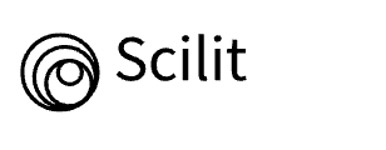Comparative Study of Customer Preference with Respect to Two Fashion Brands H&M versus Forever 21
DOI:
https://doi.org/10.70301/6wphpy33Abstract
It is important to understand consumer preferences as this understanding could help companies in shaping their product offering. This understanding gains even more importance when the product is a fashion brand where preferences can change rapidly and the product is highly personal. Given that India is a key market for several International brands, it is crucial to understand the consumer preferences in the Indian context. Towards this objective the present study aims to; find out the preference level of consumers with respect to the H&M and Forever 21 clothing brands in the Delhi/NCR(National Capital Region); to compare customer preference with respect to factors such as quality and price of products, availability and convenience of buying products, advertising, customer service, brand image, social media presence of products and social status attached to the products of the brand.
The study finds that the difference is significant with respect to factors such as price, advertisements and the convenience of buying, while there is no significant difference with respect to other factors. Price, brand image, social status attached to the products are factors that have been ranked higher in preference.
Additional Files
Published
Issue
Section
License

This work is licensed under a Creative Commons Attribution 4.0 International License.
Publication Agreement
This Publication Agreement ("Agreement") is made between the author(s) ("Author") and the SBS Journal of Applied Business Research ("Journal"). By submitting a manuscript for publication, the Author agrees to the following terms:
1. Grant of License
The Author retains full copyright ownership of the submitted and published work. The Author grants the Journal a non-exclusive license to publish, distribute, and archive the article in any format or medium, including but not limited to online and print versions.
2. Open Access and Licensing
All articles published in the Journal are fully open access under the Creative Commons Attribution 4.0 International License (CC BY 4.0). This means that:
• The work can be freely used, shared, and adapted by anyone, provided that proper attribution is given to the original Author.
• The full license terms can be found at https://creativecommons.org/licenses/by/4.0/.
• No additional restrictions are placed on the use of published articles.
3. Author Responsibilities and Warranties
The Author guarantees that:
• The submitted work is original and has not been published or submitted for publication elsewhere.
• The work does not infringe on any third-party rights, including copyright, trademark, or proprietary rights.
• All necessary permissions for copyrighted materials used in the manuscript (e.g., figures, tables) have been obtained.
• The manuscript complies with ethical research standards and does not contain any form of plagiarism or falsified data.
4. Editorial and Publication Process
• The Journal reserves the right to perform editorial revisions for clarity, formatting, and consistency while maintaining the integrity of the Author’s work.
• The publication of an article is subject to peer review, and acceptance is not guaranteed upon submission.
5. Retraction and Corrections
• The Journal follows COPE (Committee on Publication Ethics) guidelines and reserves the right to retract, correct, or withdraw an article in cases of misconduct, errors, or ethical concerns.
6. Governing Law
This Agreement is governed by the laws of Switzerland. Any disputes arising under this Agreement shall be resolved in the courts of Zurich, Switzerland.
7. Agreement Acceptance
By submitting a manuscript, the Author acknowledges and agrees to the terms outlined in this Agreement.
Editor-In-Chief
Prof. Dr. Milos Petkovic






